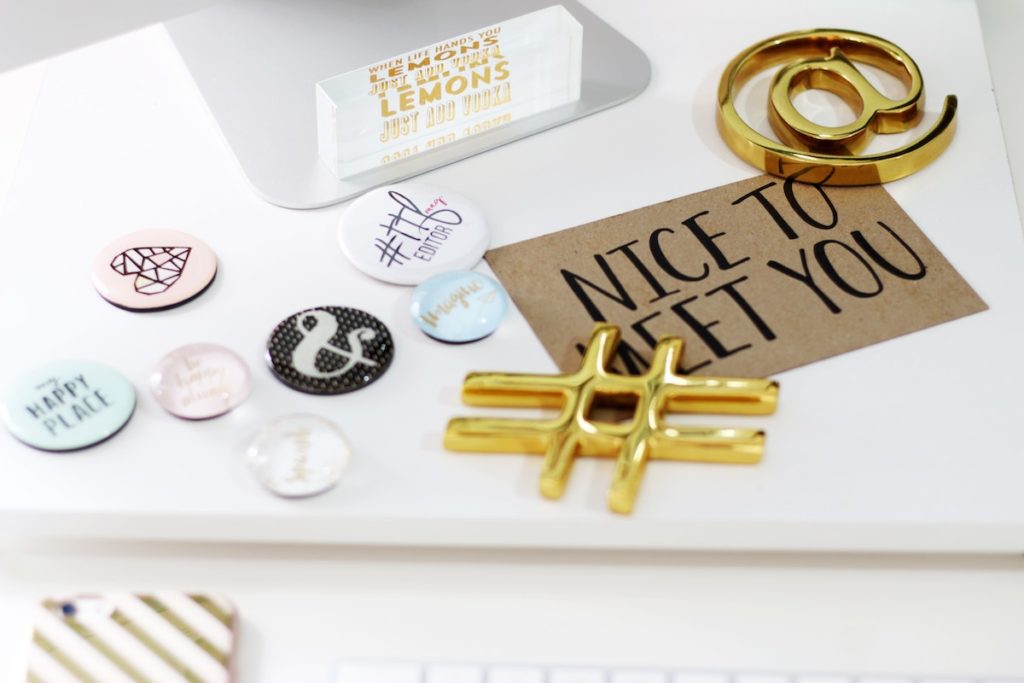I’ve worked as a product designer for many years before going freelance and settling on the niche of female service-based providers. Although you’re the one providing the services whereas a designer creates the product experience, there are still plenty of lessons and parallels between the two. That’s because principles surrounding customer experiences affect both.
Lesson #1 – Make a good first impression on signup
The first impression of the product is during the onboarding process – whether or not such a process exists. In product design, the purpose of onboarding is to make a new user feel welcome, excite them about what’s to come/what goals they’re about to solve (no matter the time frame) and to transition them into their first tasks.
The same is true for service providers. Whether you’re providing ongoing services or one-off services, you ought to think about how you onboard clients who just signed up to work with you.
Celebrating the new contract
You want your new client to feel welcome and to show them an appreciation for their business. Avoid them feeling like another number, at all costs. There is nothing worse than being schmoozed by someone and then feeling like they forgot about you as soon as you signed the contract.
Of course, it doesn’t imply you literally forgot about the person. That’s a whole other problem. This feeling can be caused by a variety of reasons such as a difference in energy or attentiveness. The new client could have a subpar experience, at best, and second-guessing their decision, at worst.

Think about your current onboarding process and consider what can be improved. How can you make your new clients feel even more excited about working with you? What can you do to celebrate the newly signed contract? If possible send them a small gift or a welcome package. It can be a digital or a physical gift. Something small like a box of chocolates and a handwritten welcome message can make a huge impression while not breaking your bank. It will make your new client feel extra special.
Ask yourself, what small things cna you do to level up your current onboarding experience?
Set expectation
Onboarding is also the perfect place to set expectations for working together. Take your time to outline what the process will be like and identify all upcoming milestones. Remind the client what’s expected of them, when and even why. Clarity and transparency set here will go a long way in improving the working relationship you will have with each other. Iterate and remind them why they signed to work with you. This will reemphasize to them you’re an experienced professional who’s got their back.
Ask yourself, what can you do today to make your onboarding process more customer-focused?
Lesson #2 – People should know what’s going on at any given time
When using a product, such as Instagram or Dubsado, it’s easy to get disoriented since there are many things going on. A key in designing quality products is making sure that the user understands what’s going on, where they are within the product at any given time, and providing feedback as they’re interactive with the product.
The simplest example is showing a progress bar for when you’re uploading an image. Imagine uploading photos to Instagram and not knowing whether or not they were posted unless you tapped into your account after each attempt to post something. It’s such a weird concept, isn’t it? Yet that’s exactly what it feels like when a product or an app doesn’t provide instant and obvious feedback to the user. In well-designed products, there is always some kind of feedback to every interaction and clues as to where the user is within the product.
Providing transparency
A similar concept can be applied to service-based businesses. This idea works well with business automation. Keeping track of every client manually can be tedious on your end and can lead to outdated information on your client’s end; it also has the potential for things to fall through the cracks, get lost or forgotten even for the most meticulous and organized among us.
Get a system in place that your clients can access at any given time that allows them to see where in the process they are, what’s already been done, where to find appropriate information or assets, what’s next, or what’s required of them and by when. If you already have this in place, consider how you can optimize or organize it for further clarity.

This is an easy form of transparency that service providers can provide. Such a system is perfect for creative professionals such as graphic designer, writers or developers. However, it can easily be extended to coaches, VAs or social media management companies too.
Ask yourself, how can you make your process more transparent to your clients?
Lesson #3 – Always keep a short feedback loop
When designing products, it’s good practice to keep a short feedback loop with the target audience. This allows the product design team to keep a close eye on what’s working well for the users within the product (and which doesn’t need immediate improvements), what’s working okay (and is low in priority for improvements) and what’s really getting in their way or missing altogether (and therefore should be high on priority of improvements).
Such product teams are able to design more accurate solutions for their users. They have a great understanding of the issues the users face and their mindsets. On the flip side, these products and companies are more loved by their users because their concerns are being heard and addressed in a timely fashion.
Show your clients you’ve got their back
As a service provider, you’re most likely in regular if not constant contact with your clients. This is a fantastic opportunity for the taking. Take the time to consciously check in with your clients to see what’s going on with them.

Are they confused about anything? Are they impressed by something? Is there anything else you can help them with or is there something they’re struggling with? These check-ins don’t have to be forced or too frequent. The idea is to get an understanding of their mental state and their satisfaction so far. You don’t have to run through this same script every time you’re speaking to them.
Being mindful of your clients will allow you to gain insight into improving their experience of being your client which will foster an even stronger client relationship. The idea is for you to gain insight into what’s confusing for clients that is second nature to you and to make them feel at ease with the process. At the very least it will let your clients know that you’ve got their backs and show them you’re extra attentive.
Ask yourself, how can you be more mindful of your client’s experience while you’re working together?
Lesson #4 – A proper offboarding
Products with fantastic offboarding experiences do a few specific things. All in all, they make sure the user has an appreciation of what they’ve accomplished with the product beyond simply finishing their tasks. Some products take a small effort to celebrate the accomplishment. For example, Duolingo if you’ve ever finished a language course with them. These products may even add suggestions on what a user can do next. Think of an online school that celebrates you finishing a design course and provides you information about looking for your first design job or freelance gig.
Offboarding for service providers
When you’ve finished working with your client, take a minute to account for everything you accomplish together. Provide them with a detailed list of accomplishments and deliverables. If possible, provide them with additional information for follow-through. For example, what they need to do to publish their new landing page on their own.

Take a minute to get them excited about having worked together and iterate how far you’ve come together. Show them a little gratitude too. If possible give them another small gift.
Once everything is wrapped up, take a minute to ask for an exit interview where you ask for detailed feedback about their overall experience with you; this can be valuable information in improving your future customer-relationships. It’s also a perfect opportunity to ask for a testimonial and share your referral program details. Getting a testimonial while your client’s excitement is up leads them to write a more thoughtful and more powerful review because their excitement is still with them.
User retention for service providers
Just because a client’s project comes to an end doesn’t mean it’s the end of your time together. Often times these happy clients will come back when they need another photoshoot or they have a new business that needs an SEO expert. Better yet, they’re a source of amazing referrals.
Ask yourself, how can you show gratitude to your clients when you’ve finished working with them? How can you make them feel seen and cherished one last time?
Customer-centric practices
Businesses that focus on their clients do better because they invest in their clients’ customer experience. The good news is, it doesn’t take a lot to improve the said experience. It the same principles that apply to customer-obsessed copy or customer-focused landing page designs to outperform their alternatives.
The takeaway
Asking yourself these the questions mentioned above can go along way in improving and optimizing your clients’ customer experience while working with you. Even small changes can help make big waves in improving customer satisfaction and therefore gaining long term clients who cannot stop referring you to their friends.



Comments